More House, circa 1816, located at the Farmers' Museum, Cooperstown,
NY
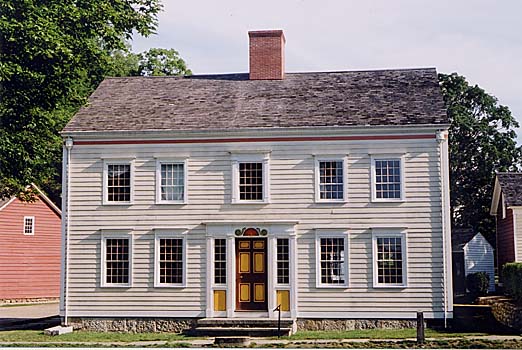 |
The More house, circa 1816, was reconstructed on the north
end of the village green at the Farmers' Museum in Cooperstown,
New York. The roof was built with a box gutter, a trough located
at the eves that runs from one end of the roof to the other.
The trough empties into two leader boxes that are located under
the soffit at each end of the house. They in turn drain to the
ground through leaders or downspouts. The photograph (below right)
shows the pipe that empties water from the box gutter into the
leader box. A short section of this pipe is visible just above
the top of the leader box and in line with the decorative star
on the front of the leader box.
Box gutter construction detail
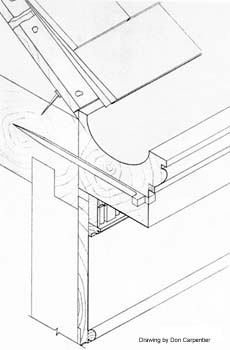 |
|
Leader box and soffit detail
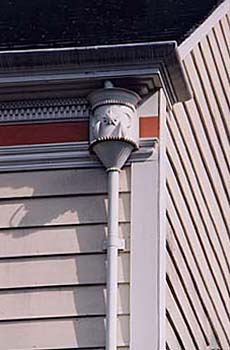 |
|
Leader Detail
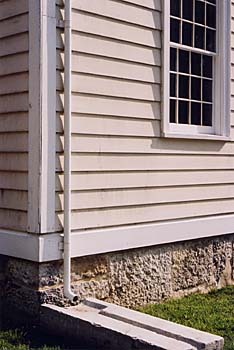 |
|
More House, Back Corner
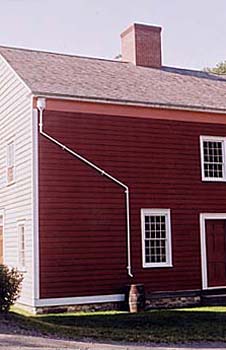 |
|
Leader box and soffit detail
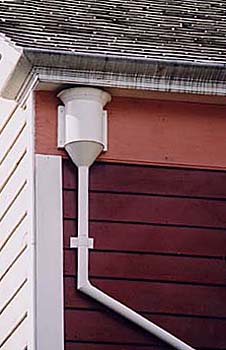 |
|
Downspout and Rain Barrel Detail
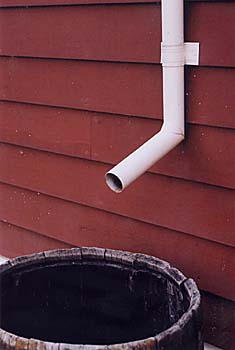 |
|
It was decided to reproduce a circa 1825 leader box that
is owned by the museum for this part of the restoration. The
fact that the leader box and the house were both originally located
in the Cooperstown area in central New York made this choice
all the more appropriate. This commission involved reproducing
four leader boxes, making enough pipe for the leaders on three
corners of the house, and an off-set leader located at one corner
of the rear of the house. Even though the original leader box
and leaders were made using tinplate, it was decided to construct
the entire system from copper since, even though it would ultimately
be painted, it would withstand the elements far better than tinplate
would.
Leader Box detail
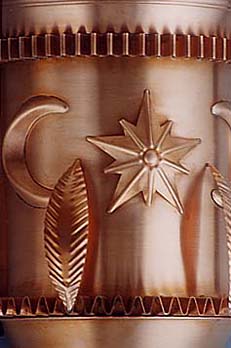 |
By far the most challenging and time-consuming part of
this project revolved around reproducing the leader box. The
two for the front of the house were to be made exactly like the
original; the two for the rear of the house were to be made without
ornamentation (years ago, houses that were painted white on the
front and sides had the back surface painted red since paint
made with red pigment was cheaper than paint made with white
pigment; by the same token, money was not wasted decorating the
leader boxes on the back of the house since passersby would never
know the difference). Special tooling had to be made to make
an exact reproduction of the decorative star. To make the crescent
moons it was necessary to make clay impressions of the original;
the impressions were then used to make the necessary dies to
form the crescents. The relatively small size of early 1800's
sheets of tinplate dictated that the leaders be constructed in
ten inch long sections. The sections were soldered together using
a special jig in order to keep the assembled sections in perfect
alignment and the resulting 16' long leader straight and true.
The design of the brackets used to fasten the downspout to the
house was copied from period brackets.
|




